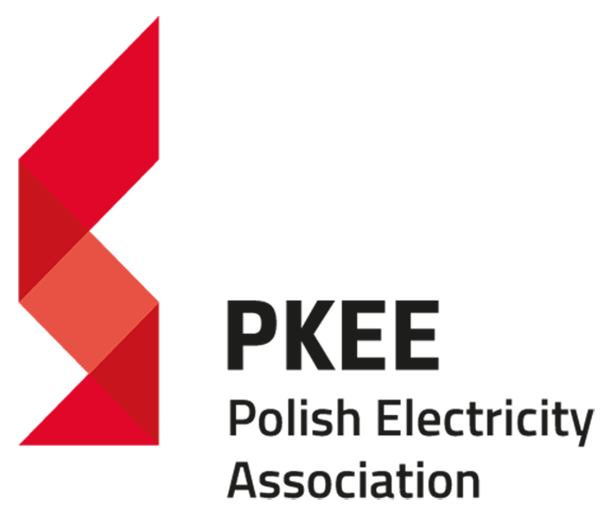The Polish Electricity Association (PKEE) calls for urgent reforms to the EU Emissions Trading System (ETS), including revisions to the Market Stability Reserve (MSR), Article 29a, and measures addressing the role of gas-fired generation. With the supply of EU Allowances (EUAs) on the primary market expected to end by 2038/2039, PKEE stresses the need to secure market liquidity and avoid speculative behaviors that undermine the functioning of the ETS.
Addressing the broader challenges facing the EU’s climate and energy agenda, and underlining the necessity for a policy framework that reflects current risks and priorities, Marcin Laskowski, Vice-President of PKEE, emphasised: “The EU’s energy and climate policy must reflect the new geopolitical reality. Decarbonisation cannot be pursued in isolation from other strategic priorities such as energy affordability, economic resilience and competitiveness as well as defense. The EU ETS is one of the crucial tools of climate policy, but its current design is misaligned with today’s geopolitical and economic conditions. A deeper, structural reform is essential to make the system more resilient, limit price fluctuations, and ensure that the energy transition is both secure and achievable across all Member States.”
Sectoral and revenue allocation improvements
PKEE calls for consistent sustainability certification and GHG savings verification for biomass installations across EU legislation, such as RED and ETS. Furthermore, municipal waste incineration (MWI) should not be included in the ETS due to its limited environmental benefit and the significant administrative burden.
For smaller installations (below 20 MW), operators should be given a choice between inclusion in ETS1 or ETS2, allowing for a more tailored approach and minimising regulatory burden.
When it comes to the use of auction revenues by Member States, PKEE firmly states that these should be earmarked for specific decarbonisation programs rather than transferred to general national budgets. In the past, using ETS as a funding tool for unrelated expenditures has proven damaging to the credibility and purpose of the system.
ETS Market Stability Reserve (MSR) and Article 29a – in need of reform
The current MSR mechanism, based on the total number of allowances in circulation (TNAC), does not accurately reflect the market's actual liquidity. TNAC includes EUAs banked by market participants for compliance or speculative reasons. These allowances are not available on the market but still trigger the absorption of further EUAs into the MSR, further reducing liquidity. Therefore, PKEE proposes changing the MSR’s invalidation rules so that EUAs in the reserve can be released when necessary to stabilise the market. Additional indicators, such as EUA price movements, should be used in conjunction with TNAC to assess actual market liquidity better.
As the primary market supply of EUAs declines in the coming years, banking behavior is expected to increase. Some market actors, especially financial ones, may adopt a “buy-and-hold” strategy, anticipating future scarcity and price hikes. Without reform, this may result in increased volatility and market distortion. To address this, the MSR and Article 29a should be replaced or significantly revised. PKEE recommends establishing a new institution responsible for managing EUA supply to help stabilise the market, utilise intertemporal flexibility, prevent excessive speculation, and support the smooth functioning of the ETS.
Moreover, the current excessive price mechanism under Article 29a has an activation threshold that is too high to be effective. PKEE suggests examining the option of introducing a price-based trigger for releasing allowances from the MSR in periods of market stress.
Gas-fired generation and decarbonisation challenges
PKEE stresses that ETS parameters must be aligned with the broader EU regulatory framework. For instance, while the EED permits the operation of high-efficiency cogeneration units until 2045, the supply of EUAs on the primary market will end in 2038 or 2039. This regulatory inconsistency puts the long-term viability of gas-fired generation, crucial for energy security and dispatchable capacity, at risk.
Current rules under Article 27a allow reserve or backup units to be excluded from ETS only if they have operated fewer than 300 hours per year over the previous three years. However, this provision excludes new units, which by definition lack such historical data. PKEE advocates for greater flexibility of this mechanism, such as the option to pay a fee instead of automatic return to the ETS. Additionally, the operational threshold should be increased from 300 to 1,500 hours to support units like open-cycle gas turbines (OCGTs), which are essential for integrating renewable energy sources, maintaining grid stability, and ensuring electricity supply security.
Decarbonising gas-fired capacities that have replaced coal-based generation will remain a challenge. PKEE warns that rising EUA costs will not necessarily drive faster decarbonization - instead, they may limit companies’ financial ability to invest in cleaner technologies. Therefore, a realistic and coherent approach to the future of gas-fired capacity within the ETS is needed.
Modernisation Fund - long-term, scaled-up support needed
As decarbonisation efforts accelerate, the Modernisation Fund must be maintained beyond 2030 and its size significantly increased. A timely decision on this matter is essential to provide clarity and stability to investors planning long-term projects. The future Fund must match the scale of energy transformation challenges faced by beneficiary Member States. Additionally, it is worth noting that the Fund can also support the achievement of the Clean Industrial Deal objectives, such as electrification (through investments in the grid).
Revenues from EUA auctions are likely to be insufficient to cover decarbonization across all sectors covered by the ETS. The Fund should continue to support energy sector projects, including heating, high-efficiency cogeneration, distribution networks, and storage infrastructure. Redirecting funds toward new instruments such as the Industrial Decarbonization Bank would risk weakening support for critical energy investments.
Innovation Fund – addressing regional differences
While PKEE acknowledges the importance of the Innovation Fund in supporting transformative climate investments, the geographical distribution of funding remains imbalanced. To date, the majority of resources have been allocated to countries with advanced innovation ecosystems, leaving other regions with limited access to these resources.
This imbalance risks deepening climate investment inequality, particularly in regions that host carbon-intensive industries that are most in need of decarbonization. PKEE calls for greater geographical balance and urges changes to the methodology for calculating avoided emissions. Specifically, Member States should be allowed to apply national benchmarks, which better reflect their starting point in the decarbonisation process. The current reliance on EU-wide benchmarks puts countries like Poland at a disadvantage.

